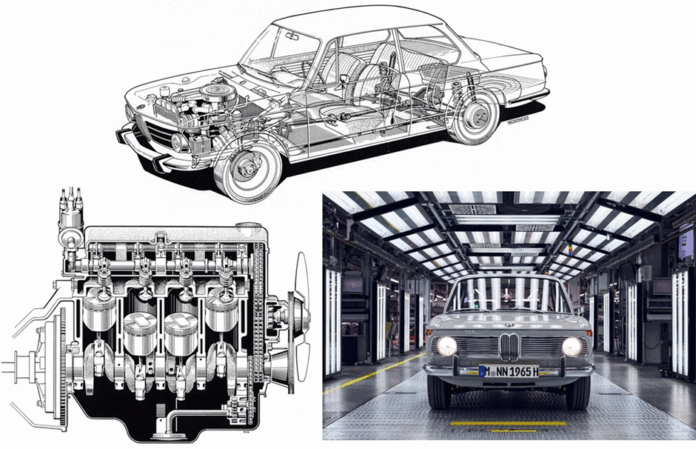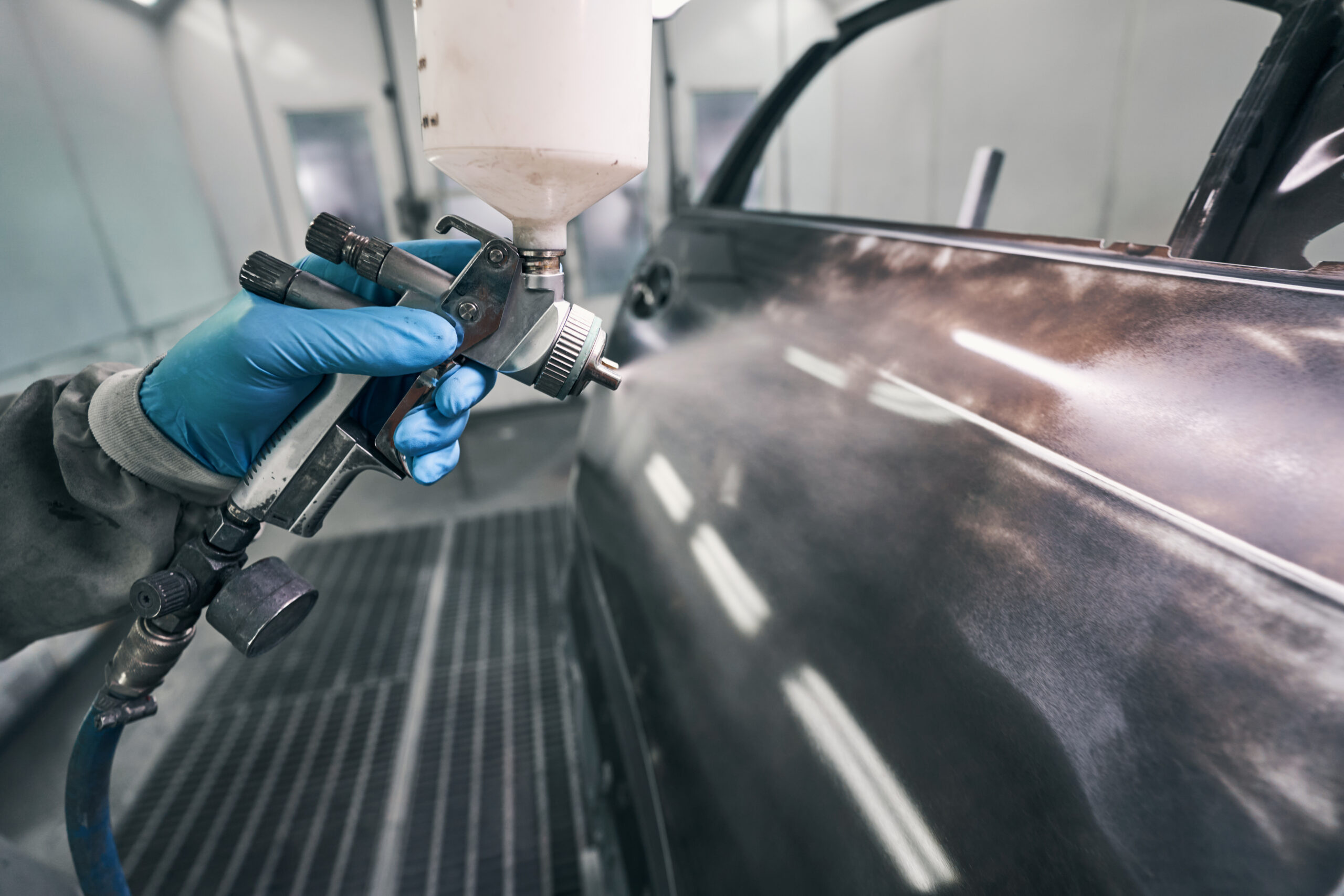The revolution from the 1960s which built modern BMW

Top: BMW 1502, the second phase of the Neue Klasse which led directly to 3 series. Bottom right: The BMW 1500 sales stared in 1962 which led directly to the 5 series, and here is the 1800 version in the new BEV assembly hall at the Munich plant in 2025. Bottom left: The M10 petrol engine which powered so many version of the Neue Klasse, the ‘02’ Klasse, coupes and more.
When a company announces a revolution, and that company is BMW, the world listens.
The information flowed from the reveal of the Concept Vizion in September 2023, where the usual promises of this, that and the other brought had a new – Neue Klasse.
What made this different? Not only the latest thinking on electrified powertrains, not only significantly increased vehicle to anything connectivity (‘V2X’), but a return to the important events that started in 1961, and came to define the whole company.
The OG Neue Klasse
BMW has had a very interesting and occasionally troubled past. In the 1950s it undertook manufacturing under licence from Iso, owned by Renzo Rivolta, to build the BMW Isetta 250 and 350 bubble car – and the stretched version, the 600. The model range at the time also included the super expensive 501, and then the equally expensive the V8 powered 503 GT coupe along with the 507 roadster.
The gap needed to be filled to allow the company to build more cars and sell then at a bigger margin. Enter the BMW 1500 sedan, the beginning of a new dawn.
The BMW approach of the time was to use expertise – not just a list of features, but deep knowledge. The humble BMW 1500 had:
- a brand new M10 four-cylinder engine with 1499 cm3 producing 59 kW. The project was led by powertrain chief engineer Alexander von Falkenhausened, and featured a forged steel crankshaft, cast iron block, an aluminium cylinder head, hemispherical combustion chambers and a short stroke. It would reach high engine speeds effortlessly, and was not expansive to make…. our first clue.
- Independent suspension all round, not unheard of but not common on mass market vehicles. The aim was to give better than average road holding.
- Front disc brakes as standard – this was uncommon on mass produced vehicles.
- A well finished and stable body structure, with enough features to justify consideration as slightly above the norm.
There were the usual ‘it did what!!!’ problems for an all-new car, but this was done on a shoe string. BMW did not have a lot of money to play with and needed cash flow fast. To make every single invested cent work, each decision needed to be taken carefully.
The engine, for example was expanded three more times so that by 1963, when the BMW 1800 appeared (engine upgrade, 1773 cm3 engine producing 81 kW), it because recognised internally as the real thing – the Neue Klasse. In 1965 the new assembly halls for the BMW 1800 were complete, the same year the BMW 2000 appeared (engine upgrade, 1990 cm3 producing 96 kW).
Just across the road from the plant construction had started that year on the stadium for the 1972 Olympic games.
The engine family was also used by the C / CS200 coupe built by Karmann, and then….
A short wheel base two door car, the 1502, appeared. Then things really took off.
What became of these magic building blocks?
- The BMW 1500 after 10 years morphed in the first 5 series, E12.
- The BMW 1502 was built from 1966 until 1977, replaced by the first 3 series E21 introduced in 1975
- The BMW 2000 C / CS was re-engineered to become the 2800 CS E9, which evolved into the 3.0 CSL ‘batmobile’ by 1972. It was the precursor to the 6 series E24
- The Neue Klasse platform was underneath all of these in one form or another.
- The M10 engine served BMW in a variety of forms for 26 years, with 3.5 million units built. Even the new 6-cylinder engine for the E9 used architecture from M10. The crowning glory? The M10 block with a turbocharger almost as big became M12 F1 engine which took Nelson Piquet in a Brabham to his second world championship. The M12 produced over the 1000 kW in qualifying and 600 kW in race trim. A true fusion of engine and turbocharger.
That clue…. all of this was from essentially one box of bits.
Well-chosen designs, maximum potential, minimum cost, maximum profit. BMW really did this.
See the next Neue Klasse in P2….




